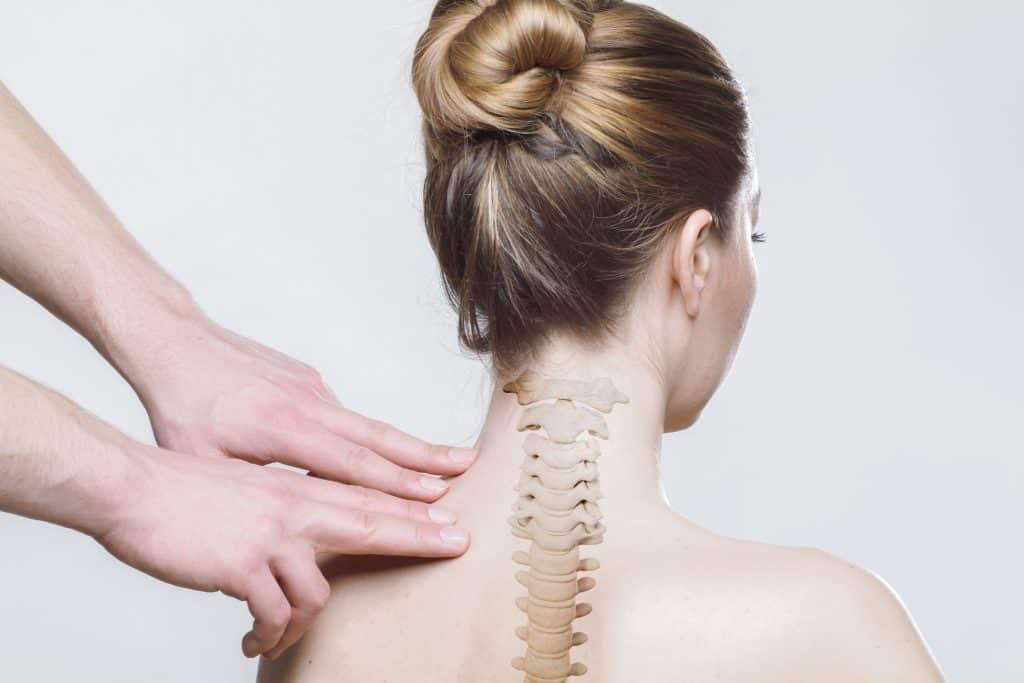
The movements in Pilates exercises increase strength in the abdominal, lower back, hip, and buttocks muscles. Consequently, practitioners can achieve better stabilization of the spine, more muscular control of back and limbs, and improved posture.
Can Pilates exercises help back pain?
Yes, Pilates can make a difference in helping with back pain because these exercises strengthen the muscles that support the spine’s proper alignment. Pilates exercises support fluid movement through the hip and shoulder joints by improving their surrounding muscles’ strength and flexibility. This fluidity prevents strain on the vertebral column. You don’t realize the burden you’re putting on your spine until the pain lets you know, which is why Pilates informs practitioners of daily movement patterns that cause stress to the spine. This practice helps to replace these habits with movements that preserve neutral alignment and promote back health.
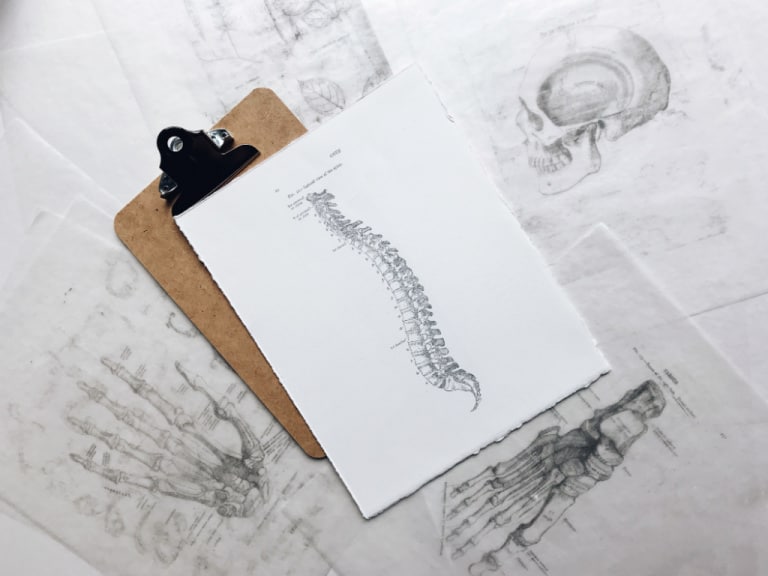
Can Pilates exercises help Sciatica?
Yes, the keys to success here are Pilates’ exercises for a stronger core. Pilates builds core strength and improves posture through controlled movements. These movements can help you to relieve your body of factors causing compression of the sciatic nerve. It is vital to understand that the causes of Sciatica can vary, and thus, there is a range of appropriate Pilates exercises dependent upon the condition of the individual. We feel it’s essential to speak with your physician before creating the right plan for you with your Pilates instructor.
Three simple Pilates exercises you can do at home to build a stronger core.
You might need time to gain the strength for these Pilate exercises to build a stronger core, but keep practicing!
1. Front Support Prep
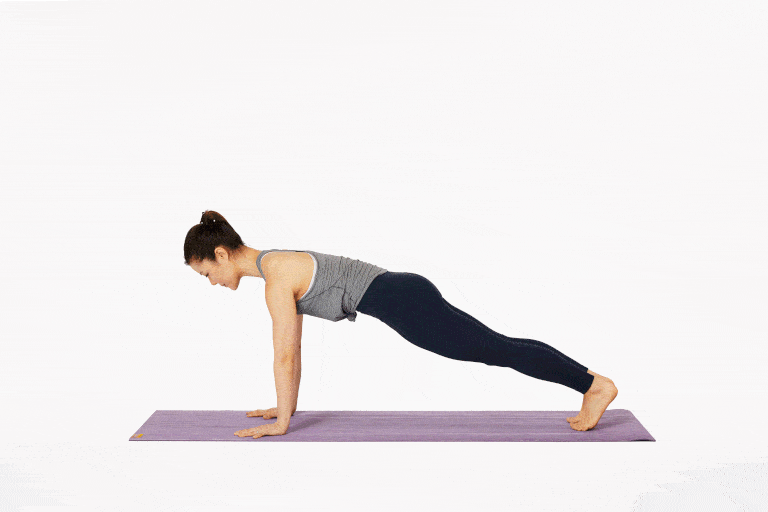
This exercise is pivotal for strengthening your core, legs, arms, and shoulders. The positioning of this movement improves shoulder stability. Bring yourself to your hands and knees on the ground—the top of your feet on the floor and in line with knees, knees aligned with your hips. Place your hands shoulder-width apart, inner elbows facing slightly towards your hands. Lengthen your torso from the tip of your head to your tailbone and keep a natural spine. The back of your head should be reaching up, away from the ground. Roll the toes of one foot over to come to the ball of your foot as you swing your thigh back to straighten your leg. Alternate legs, doing this several times without shifting your hips side to side. Then add straightening of both legs supported by the front body (on hands and feet). Keep your chin to your throat and keep your legs straight. Pull your belly to your back and your back to your belly. Play with shifting body weight into hands and feet, maintaining an even shape. When done, come to kneel and rest hips to heels, bring your chin to your throat, arms along your body, wrists next to ankles for a chest to thigh stretch.
2. Swimming Prep
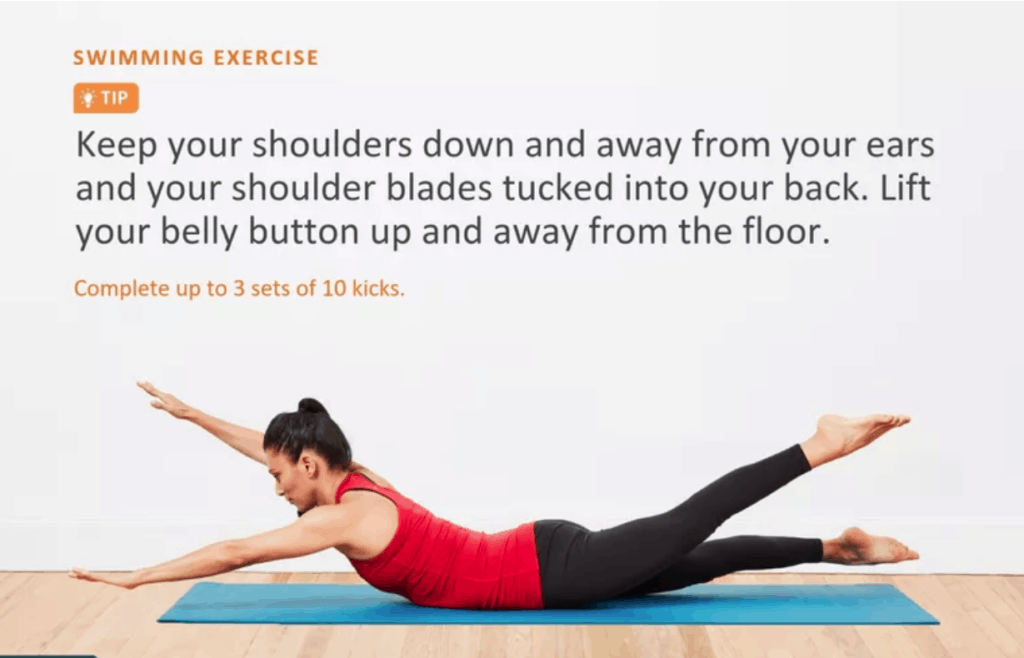
This movement’s benefits include improved posture and more muscular buttocks, back strength, and core. Lay on your stomach on the ground. Stay here for a few minutes, allowing the body to acclimate to the position. Next, open arms and legs into an “X” position, legs slightly turned away from each other, and arms with the pinky side of hands down, palms facing one another (make sure your upper arms are rotated out as well). Feel your forehead on the ground, your sternum, pubic bone, knees, and tops of your feet. Lean on your pubic bone and feet to straighten legs. Lean into chest and sides of hands as straighten elbows to lift head/chest. Hold five breathe counts. To progress to full swimming, press down on the opposite foot/hand as lift the other hand/foot off the ground. Reach directly out in front of you and roll your shoulders up, back, and down away from your ears. Keep your belly button towards your back and your back towards your belly button. Keep reaching out from the top of your head and up from the ground. Play with the timing of arms and legs; fast, slow, or combination. When done, come to kneel and rest hips to heels, bring chin to your throat, arms along the body, wrists next to ankles for a chest to thigh stretch.
3. Spine Twist Prep
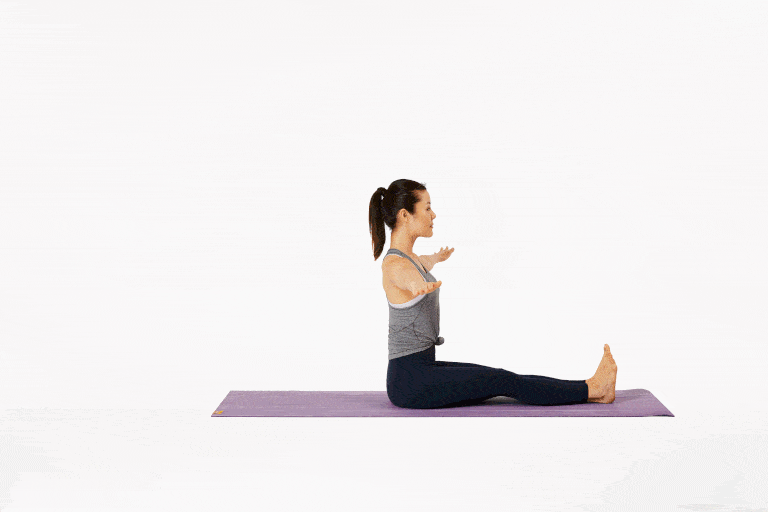
Ready to improve your pelvic stability and posture? Try this exercise to strengthen the spine muscles while stretching your hips, hamstrings, and building up your torso muscles. Sit on your buttocks directly on your sit bones with your spine straight (use a folded over mat, yoga block, or several stacked towels if you cannot sit upright). Visualize a string pulling from the top of your head to the sky. Bend your knees, feet flat on the floor, shoulder-width apart. Make a “T” with your arms out to the side, slightly in front of shoulders and palms facing the ground, hands below wrists, wrist below elbows, elbows below shoulders. Turn your ribcage to one side as you reach the top of your head away from the ground. Be sure to keep your sit bones on the floor. Hold the position until you have exhaled all the air from your lungs, return to the starting position, and repeat for the opposing side. As the spine gains strength, work to straighten legs. Repeat this cycle five times.
